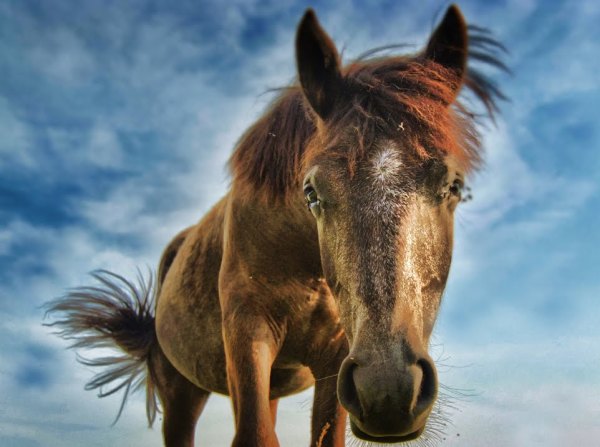by Fran Jurga | 5 January 2010 | The Jurga Report at Equisearch.com
It’s the oldest joke in the book. Some non-horseperson walks up to you when you are riding in a park or on a trail and says to your horse, “Hey, why the long face? Aren’t you happy to see me?” Or maybe it’s the UPS deliverer or the postal carrier. They think it’s the funniest joke ever. If you’ve heard it once, you’ve heard it a hundred times, right?

But there’s something about that long face on that horse of yours. You know every inch of it. And sometimes, you feel like he’s trying to tell you something.
“He’s not right. Just look at him.”
How often have you said that about a horse? Is it the way he holds his head? Can a horse slump his shoulders? Or can a horse actually show an expression of pain or discomfort on his face?
If you spend a lot of time around sick and lame horses, you start to recognize “that look”. It’s hard to define, but you know it when you see it. Maybe it’s the way they hold their ears. Or their eyes are less focused. The French might call it a certain “je ne sais quoi”.
Some older horses seem to have it too, especially older horses with Cushings disease. And then again, some older horses don’t.
On her blog last week, media magnate and horse owner Martha featured her day spent in the barn with her 17-year-old Friesian Martyn, who is suffering from a mysterious and debilitating lameness condition. She mentioned that he seemed to look “pensive” all the time, in spite of his bright and kind nature. She knows what this article is talking about!
The British Veterinary Association Foundation knows that look too. And they want to understand it. To that end, they have funded the veterinary college at Bristol University to investigate how horses use facial expressions and how humans might recognize equine facial expressions as a means to assess pain in horses.
“Pain is a complex, dynamic, physiological and emotional phenomenon that leads to suffering and distress in animals,” the BVA wrote in their funding announcement. “Assessment and identification of pain in horses presents owners and veterinary surgeons with a significant challenge since there are currently no reliable, repeatable pain assessment tools validated for use in this species.
“This study will use an innovative and novel approach, kinematic analysis of facial movements, to develop a method of pain assessment in horses.”
The BVA Animal Welfare Foundation “Horse Grimace Scale” could be used by owners and veterinarians to identify pain in horses. The Foundation believes that improved recognition and treatment of pain will have far reaching welfare benefits for horses.
“He feels better, can’t you tell? That look is gone!”
I would think that this sort of evidence-based analysis of a horse’s expression of pain might be very useful for humane officers and rescue workers. We all think we “understand” the horse’s expression, but there may be some information that comes from this study that surprises us. I will be following this one. You’ll be able to tell by the curious expression on my face.
Follow @FranJurga on Twitter.com for more news and media for equestrians!








